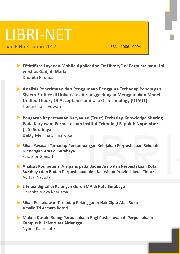Majalah Ilmu Faal Indonesia
ISSN 0215-1995
Vol. 10 / No. 1 / Published : 2010-10
Related with : Scholar Yahoo! Bing
Original Article :
The difference of sweet taste sensitivity because of the usage of non-alcoholic mouthwash compared with 26% alcohol contained mouthwash
Author :
- Fatma Yasmin Mahdani*1
- Anis Irmawati*2
- Yuliati*3
- Fakultas Kedokteran Gigi Universitas Airlangga
- Fakultas Kedokteran Gigi Universitas Airlangga
- Fakultas Kedokteran Gigi Universitas Airlangga
Abstract :
The aim of this research was to know the sensitivity difference of sweet taste between user free alcohol mouthwash and mouthwash contains 26% alcohol. Mouthwash or mouth rinse is a product used for oral hygiene. Sometimes a significant amount of alcohol (up to 26% volume) is added, as a carrier for the flavor, to provide fresh, and to contribute an antibacterial effect. In addition, alcohol is a drying agent and also slows salivary flow, so that can change the taste sensitivity. Alcohol in mouthwash allows cancer-causing substances such as nicotine to penetrate the lining of the mouth more easily. And it can mean a toxic breakdown product of alcohol called acetaldehyde can accumulate in the oral cavity when swished around the mouth. This research using pre test and post test group design by giving the same action between three groups. First group is control group, the second is user non alcohol mouthwash, and the third is user mouthwash contains 26% alcohol. Data analyticusing Kruskal Wallis test. There are significantly different between three groups (p=0,036). The sweet taste sensitivity between control group, user mouthwash nonalcoholic and mouthwash alcohol 26% are different
Keyword :
mouthwash, alcohol, sweet taste, taste sensitivity, -,
References :
Guyton; Arthur C; Hall and John E,(2000) Text Book of Medical Physiology. 10th ed Pennsylvania : W.B. Saunders Co. Publ
Archive Article
| Cover Media | Content |
|---|---|
 Volume : 10 / No. : 1 / Pub. : 2010-10 |
|












